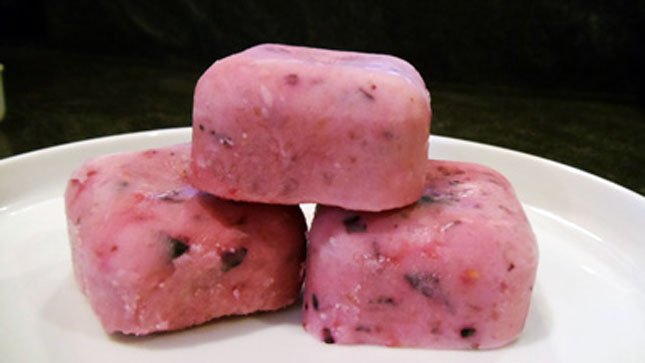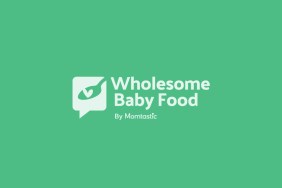Combined Baby Food Menus for babies from birth to age 12 months.
![]() When you read through these, or any other, sample menus, it is important to note that not all babies will be eating the same amounts as others, nor will they be eating the same foods. This is due to the differing ages that babies start solid foods as well as the fact that all babies are not the same. Do NOT feel as though your baby should be eating solid foods according to any schedule. Your baby will eat as much solid foods as your baby needs – trust your baby cues.
When you read through these, or any other, sample menus, it is important to note that not all babies will be eating the same amounts as others, nor will they be eating the same foods. This is due to the differing ages that babies start solid foods as well as the fact that all babies are not the same. Do NOT feel as though your baby should be eating solid foods according to any schedule. Your baby will eat as much solid foods as your baby needs – trust your baby cues.
Learn more about how to tell if Your Baby Is Ready For Solids
 Breast Milk and/or Formula are THE MOST IMPORTANT sources of nutrition for your infant up to 12 months old. Do NOT replace a nursing or bottle-feeding with a solid food meal and do not feed the solids first until your pediatrician indicates this is right for your baby.
Breast Milk and/or Formula are THE MOST IMPORTANT sources of nutrition for your infant up to 12 months old. Do NOT replace a nursing or bottle-feeding with a solid food meal and do not feed the solids first until your pediatrician indicates this is right for your baby.
It cannot be stressed enough – all babies are different and your baby may eat more or less than what is shown on these example charts. This menu and sample schedule outlines examples and shows ideas for solid foods only. It does not account for, nor does it list, total daily Breast Milk or Formula intake. See a “Suggested “Milk” chart below.
As always, you should feed your baby according to his or her cues and needs. Always consult your pediatrician if you are worried that your baby is not receiving proper amounts of either milk or solid foods.
Many breastfeeding moms supplement with formula as their milk supply may be low for a variety of reasons. We give kudos to those moms who continue to hang in there and offer their babies breast milk while supplementing. Hooray for you. You will find our menu samples include the use of both breast milk and formula, separately and together as a total “meal” solution.
Baby Menu Sample for Babies 0-3 Months of Age
Breakfast – Breast Milk and/or Formula
Lunch – Breast Milk and/or Formula
Dinner – Breast Milk and/or Formula
![]() Notes: The 3 basic “meals” have been included for example purposes only. This is not meant to be taken as a suggestion, nor is it implied, that you should limit your infant to 3 meals per day. ** At this age and stage, most infants are hungry continually and thus are fed “around the clock” and on demand. The best way to feed your infant is as often as your baby needs “on demand”.
Notes: The 3 basic “meals” have been included for example purposes only. This is not meant to be taken as a suggestion, nor is it implied, that you should limit your infant to 3 meals per day. ** At this age and stage, most infants are hungry continually and thus are fed “around the clock” and on demand. The best way to feed your infant is as often as your baby needs “on demand”.
 Baby Menu Sample for Babies (4) 6- 8 Months of Age
Baby Menu Sample for Babies (4) 6- 8 Months of Age
Early Morning Awakening – Breast Milk and/or Formula
Breakfast – Breast Milk and/or Formula first.
- Infant Cereal (Optional) – 1 food cube or 1-2 tablespoons
- Fruit or Vegetable (Optional) – 1 food cube or 1-2 tablespoons – serve mixed into the cereal or separately
Lunch – Breast Milk and/or Formula first.
- Infant Cereal (Optional) – 1 food cube or 1-2 tablespoons
- Fruit or Vegetable (Optional) – 1 or 2 food cubes (2-4 tablespoons) of each, or mix the cubes together.
- Example: apples and carrots are delicious together. Feed with or without the cereal
Snack/Dinner – Breast Milk and/or Formula first.
- Fruit or Vegetable (Optional) – 1 food cube or 1-2 tablespoons
![]() 3 meals a day at this age? Many babies are not ready to eat 3 “meals” per day until well into the 9-10 month range. There are however many babies who do begin to eat 3 “meals” at 7-8 months old.
3 meals a day at this age? Many babies are not ready to eat 3 “meals” per day until well into the 9-10 month range. There are however many babies who do begin to eat 3 “meals” at 7-8 months old.
Feeding Hints: Start out slowly, preparing a tablespoon sized portion of whatever food you have chosen to begin with. You will probably only manage to have baby eat 1/2 of the tablespoon sized portion the very first times you begin solids. As your baby becomes accustomed to eating solids, you will gradually increase the portion sizes.
Pushing Food Out of the Mouth:
Many parents find their babies will push the food out of their mouths on the first few tries. This is normal however, it may also indicate that your baby is not yet ready for solid food; only you know your baby and will be able to decide if baby is truly ready for solids.
** (Optional) accounts for the fact that not all babies between (4)6-8 months of age will be eating “meals” of any or all of the suggested foods at a given mealtime **
Baby Menu Sample for Babies 8-12 Months of Age
Early Morning Awakening -Breast Milk and/or Formula
Breakfast – Breast Milk and/or Formula first.
- Infant Cereal – 1 food cube or 1-2 tablespoons
- Fruit or Vegetable – 2 or 3 food cubes or 4-6 tablespoons total
- Dairy (Optional) – Yogurt – 1 or 2 food cube sized portions (or about 2 tablespoons) Read about Introducing Yogurt to Your Baby
Lunch – Breast Milk and/or Formula first.
- Infant Cereal or Other Grain – (Optional) (i.e. pasta, rice) – 1 or 2 food cubes or 2-4 tablespoons
- Meat/Meat-Protein Alternate – (Optional) 1 or 2 food cubes or 2-4 tablespoons
- Fruit or Vegetable – 2 or 3 food cubes or 4-6 tablespoons total of each or you can mix the cubes together with the Grain
Example: Rice mixed with Peas served with Pear Sauce on the side - Dairy (Optional) – Yogurt or Cheeses
*A Lunch of Fruits, Veggies and a Protein without grains is an option. A Lunch of a Grain with Fruits and Veggies without a protein is also an option.
Snack/Dinner – Breast Milk and/or Formula first.
- Grain (Optional) (i.e. pasta, rice) – 1 or 2 food cubes
- Meat/Meat Alternate – (Optional) – 1 food cube
- Fruit and/or Vegetable – 2 or 3 food cubes of each or mix the cubes together
- Example: Tofu mixed with Avocado served with Applesauce & Blueberries on he side
- Dairy – Yogurt or Cheeses (Optional)
![]() Notes: 3 Meals a Day? Keep in mind that even at this age group, many infants are still not ready to eat 3 “meals” per day until well into the 9-10 month range.
Notes: 3 Meals a Day? Keep in mind that even at this age group, many infants are still not ready to eat 3 “meals” per day until well into the 9-10 month range.
Please keep in mind that many infants do not begin solids until 6 months of age and not all babies will be eating the same amounts or food items.
There are many infants who may eat 4-6 ounces of food per day at 6 or 7 months old while others who are just starting solids will be within the 1-2 ounce range.
You should follow the menu ideas in keeping with your infant’s development and eating habits as well as your pediatrician’s advice.
![]() Remember, always consult with your pediatrician regarding introducing solid foods to your baby and specifically discuss any foods that may pose allergy risks for your baby.
Remember, always consult with your pediatrician regarding introducing solid foods to your baby and specifically discuss any foods that may pose allergy risks for your baby.
Suggested Daily “Milk” Intakes for Babies age 0 to 12 months
0-3 Months of age:
Breastfeed every 1-3 hours or Formula 18-40 ounces
4-5 Months of age:
Breastfeed every 2-4 hours or Formula 24-45 ounces
6-8 Months of age:
Breastfeed every 3-4 hours or Formula 24-37 ounces
9-12 Months of age:
Breastfeed every 4-5 hours or Formula 24-31 ounces
Whole Cow Milk, as a drink, should not be introduced until 12 months of age. Learn about Introducing Yogurt and Feeding Cheese to your baby.
Table compiled from Merck Source
Is my baby eating enough food?
How much solid food a baby will be eating depends on a variety of different things.
![]() A baby who began solid foods at 4 months of age will likely be eating more solid foods than the baby who began to eat solid foods at 6 months old.
A baby who began solid foods at 4 months of age will likely be eating more solid foods than the baby who began to eat solid foods at 6 months old.
![]() A baby who is eating soft diced foods as beginner foods may seem to eat less than the baby who is being spoon-fed purées.
A baby who is eating soft diced foods as beginner foods may seem to eat less than the baby who is being spoon-fed purées.
![]() How much solid foods a baby will be eating is simply the individual baby’s appetite. As with adults, some babies will eat more than others due to their individual appetites.
How much solid foods a baby will be eating is simply the individual baby’s appetite. As with adults, some babies will eat more than others due to their individual appetites.



